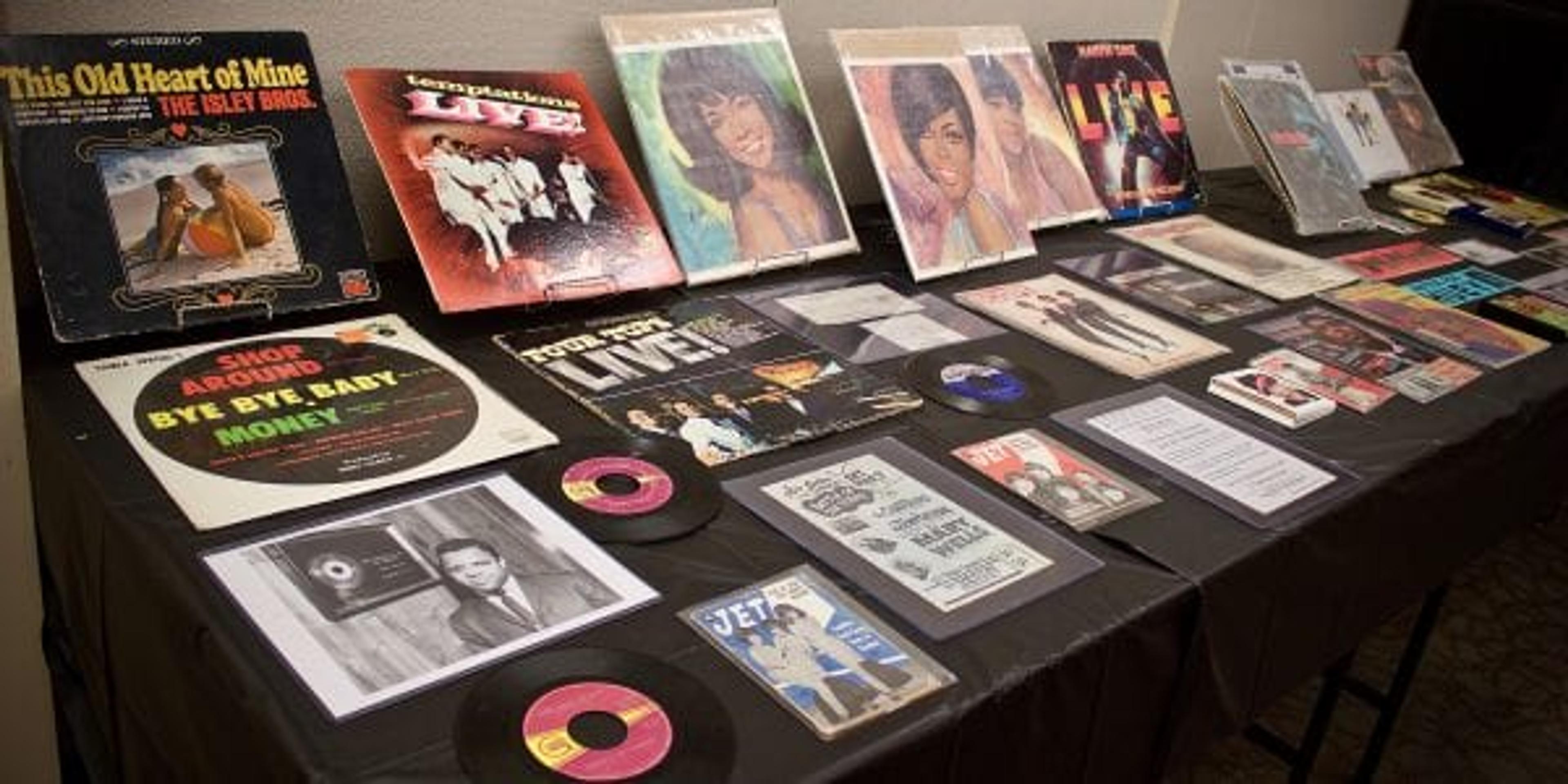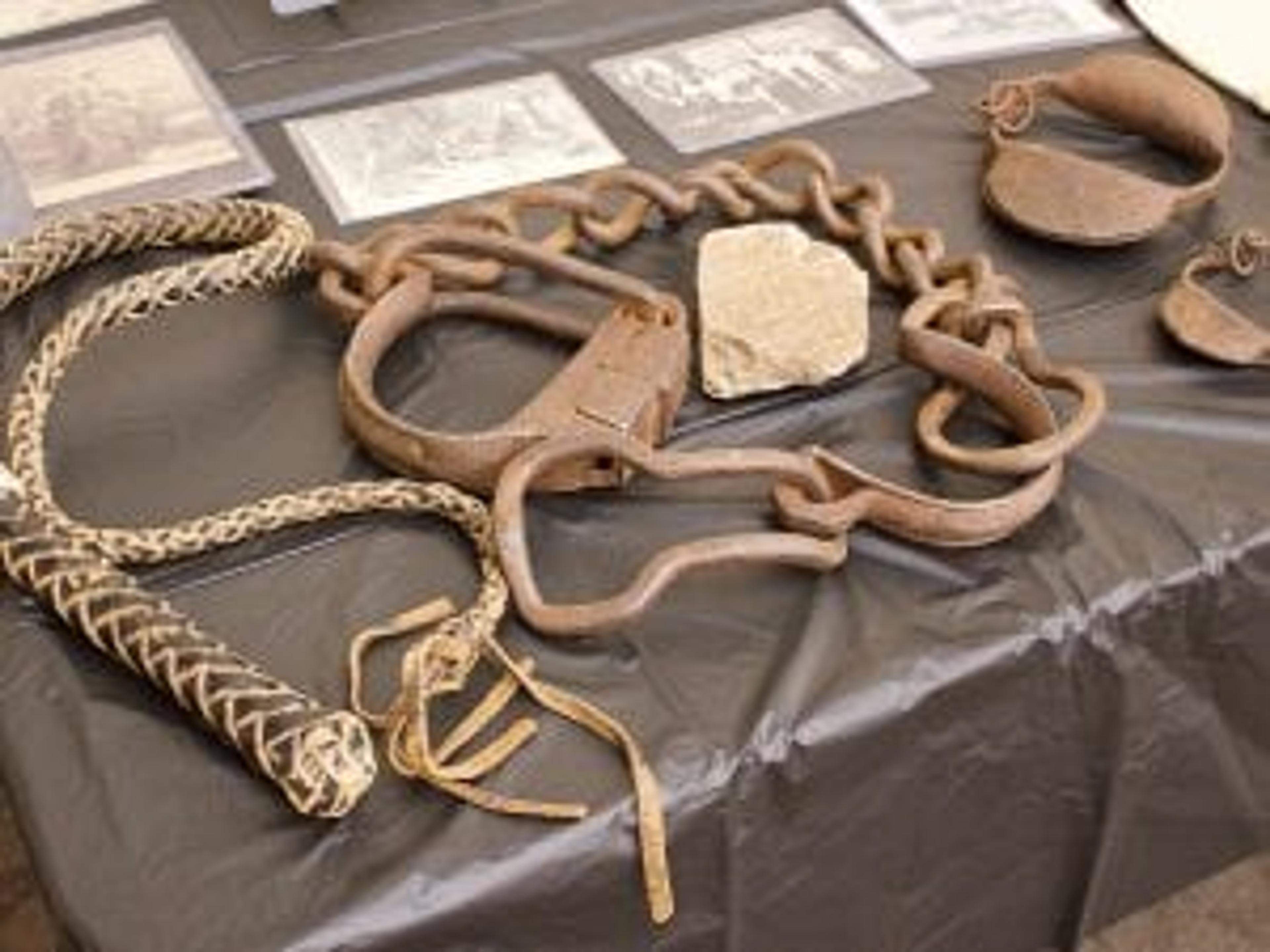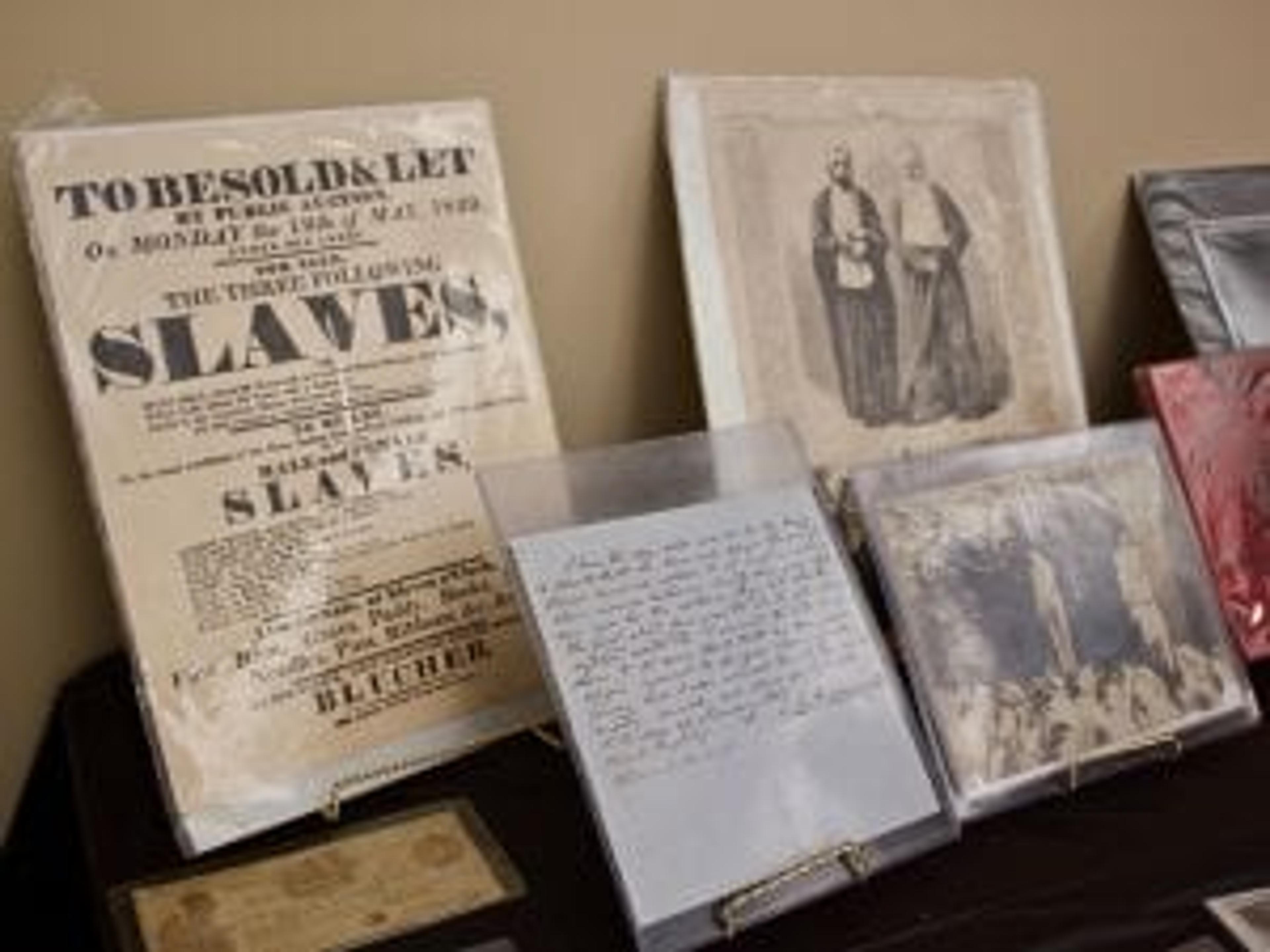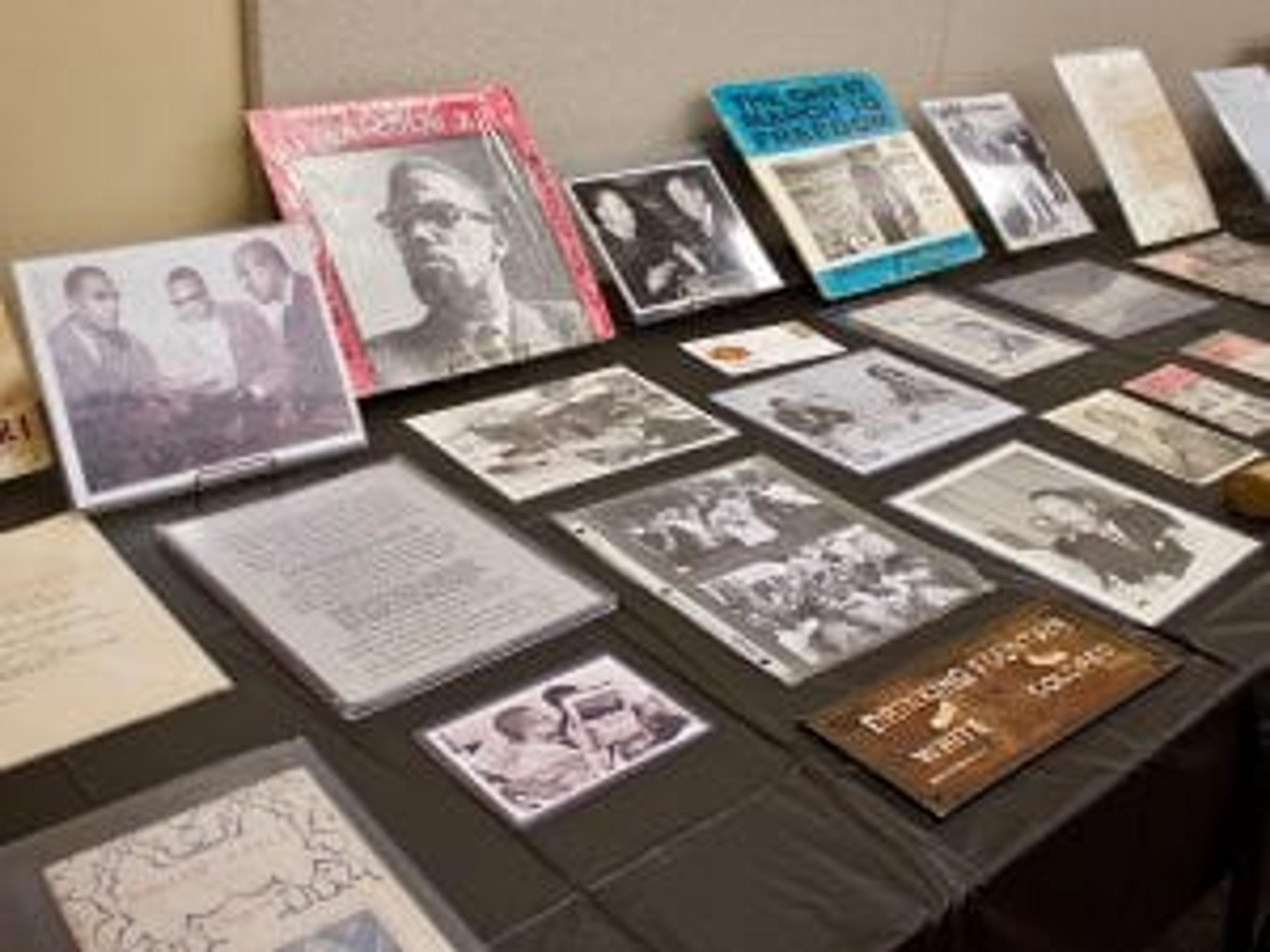Michigan Man’s Mobile Museum Brings Black History to Life

Julie Bitely
| 3 min read

From inspiration to recoil, smiles to sighs and tears, the Black History 101 Mobile Museum takes visitors on a journey that is often difficult to traverse, interspersed with moments that display the best of African-American history and culture in the United States.

Khalid el-Hakim at a recent mobile museum presentation.
The brainchild of Kalamazoo resident Khalid el-Hakim, the museum boasts an award-winning collection of over 7,000 original artifacts dating from the slave trade era to hip-hop culture. He’s curated the collection over the past 26 years and it has traveled to 28 states so far.
“Martin, Motown and Michael” is an exhibit culled from his vast collection that el-Hakim recently shared with Blue Cross employees in Southfield, Detroit, Grand Rapids and Lansing during the company’s annual Celebrate Diversity month in August.
Posters advertising the public auction of slaves, as well as actual whips and chains used in their detainment were part of el-Hakim’s collection on display. Garments worn by the early Michigan Ku Klux Klan were laid out, as well as many 19th and 20th-century artifacts depicting crude stereotypes of people with African ancestry. Mementos from the Civil Rights era, including many Martin Luther King Jr. items, gave way to Motown-era records and Michael Jackson cassette tapes.


By shining a light on a wretched time in our country’s history, el-Hakim hopes to help people learn from past mistakes and understand some of its lingering societal effects.

“We didn’t create it, but how do we live in a society that produced that material,” el-Hakim asked.
Although many of the offensive items displayed were created more than a century ago, el-Hakim warns that we’re not a post-racial society yet. He used a candy wrapper from this century to make his point. It features the African-American Disney princess Tiana from “The Princess and the Frog” movie on the watermelon flavor side, while princess Aurora from “Sleeping Beauty”, who is depicted as Caucasian, is on the vanilla side. Whether an intentional slight or not, el-Hakim said that stereotypes and unconscious racial bias run deep and need to be called out.
“How does a corporation like Disney allow a product like this to come to the marketplace,” he asked. “Things like this happen.”
He said the continued push for racial justice and equity is a fight that everyone needs to be part of.
“What will people say about our generation years from now? What side of history do we want to be on,” he asked
If you enjoyed this post, you might also like:
Photo credit: Julie Bitely





